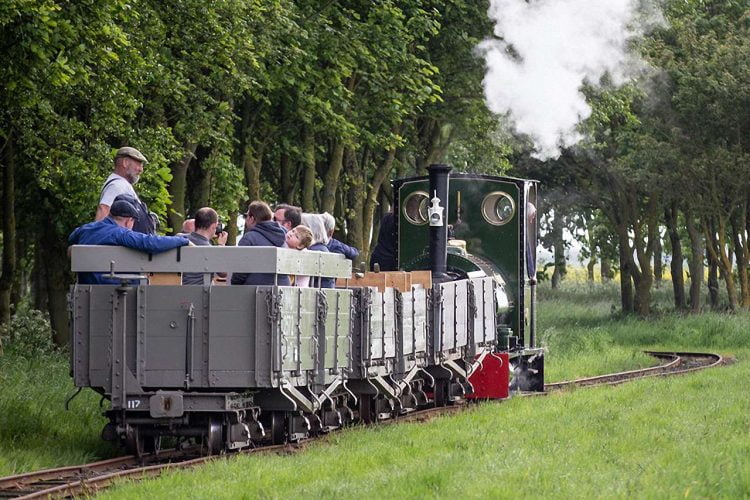On Saturday, 21st September, at Skegness in Lincolnshire there will be a rare chance to see some of the trains that helped Britain and its Allies to victory in World War One.
The trains will be in operation on the Lincolnshire Coast Light Railway (LCLR) in the Skegness Water Leisure Park, which has a unique collection of the vehicles that were used on the battlefields of France to transport men, materials, ammunition, food, medical supplies, hay for their horses, water, and other supplies to the front line trenches, and to return casualties to hospital trains for repatriation to England.
Among the railway’s collection is the last surviving ambulance van in the UK, bogie wagons used to transport supplies from the railheads, ration wagons that were sometimes pushed into the trenches by soldiers or pulled by mules, and diesel locomotives developed from designs used on the War Department Light Railways.

After the Armistice in 1918, the Allies sold off the track and rolling stock, some finding their way to Lincolnshire for use on the legendary “potato railways” which stretched into the Fens and The Marsh.
It was from The Marsh that the Lincolnshire Coast Light Railway, which was the first heritage railway in the world to be built by enthusiasts, acquired its initial stock and rails when it opened at its first site in Humberston near Cleethorpes in 1960.
The vehicles have been painstakingly conserved and restored by volunteers from the Lincolnshire Coast Light Railway Historic Vehicles Trust.
However, because of the line’s popularity of the line during its short summer season there are few opportunities for the public to see them running.

During the special event on Saturday, 21st September, some of the historic vehicles will operate special demonstration trains in between a limited service of passenger trains that will also feature vehicles from World War One or components from them.
Tickets for travel on the passenger services will be £2 return or £5 for a family. There will also be the opportunity to view trains from the lineside by making a donation to the Trust and wearing a hi-viz jacket.
This is a rare opportunity for people to see how these narrow-gauge railways helped the Allies overcome the problem of transport of men and materials over the muddy quagmires which had earlier prevented reinforcement and supplies reaching the men fighting in some of the terrible battles of the early stages of the conflict, resulting in catastrophic loss of life.
Initially the British were reluctant to use these light railways despite the Germans, the Austro-Hungarians, the French and the Russians demonstrating their effectiveness, but once the decision was taken in 1916 to build a network, it rapidly created an efficient and effective system which made possible victory in 1918.
The surviving vehicles are a significant part of our collection in Skegness and seeing them in operation is a real, living demonstration of history, showing how the British and their Allies used them to secure victory”.
Richard Shepherd, Lincolnshire Coast Light Railway Historic Vehicles Trust chairman





Responses
Nice to hear, better than a standard gauge reinactme to WW2 and a load of dad’s army type, German soldiers walking around pushing people about, pretending it was railway finest hour.